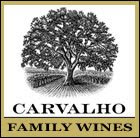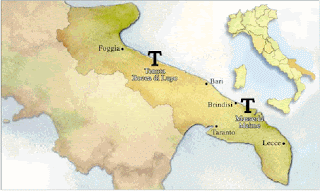I was killing some time this weekend while I was waiting to pick up my son. While he finished his Magic tournament, I was browsing the wine isle of a nearby grocery store. A bottle on the discount table caught my eye. First, the price was only $3.29 and second, one of the grapes in it was one I haven't had before: Müller-Thurgau (# 56 towards my Century count.) I didn't expect much from this purchase but thought it would be a cheap way to start learning about the grape. I'm afraid I'm more confused now! It appears that Müller-Thurgau is not held in high regard. This grape is a cross of Riesling and Silvaner created by Dr. Hermann Müller in an effort to bring the quality of Riesling to the productivity of Silvaner. I read in several places that the grape is great for growing in colder regions of the world because of it is early ripening and very productive. However, comments like "Müller-Thurgau has never been known for quality and is almost single-handedly responsible for the decline of Germany as a world power in fine wine production" made me wonder about how wine made from this grape would taste.
It appears that Müller-Thurgau is not held in high regard. This grape is a cross of Riesling and Silvaner created by Dr. Hermann Müller in an effort to bring the quality of Riesling to the productivity of Silvaner. I read in several places that the grape is great for growing in colder regions of the world because of it is early ripening and very productive. However, comments like "Müller-Thurgau has never been known for quality and is almost single-handedly responsible for the decline of Germany as a world power in fine wine production" made me wonder about how wine made from this grape would taste.
The wine I bought off the discount table was a Ludwig Neuhaus Piesporter Michelsberg made from 70% Riesling and the remainder from Müller-Thurgau and Silvaner. The first taste was sweet, but it wasn't an overpowering sweetness like I've had with other off-dry Rieslings. The wine had a different flavor, that I can only describe as nut like, though that doesn't quite fit. The wine was more interesting than I expected. The sweetness was balanced by acidity and changed into the "nutty" flavor. The finish, though laking any tannins, left a sour apple flavor. I was surprised at how much I liked the wine.
The sweetness didn't quite allow it to go well with food, but maybe I just didn't have it with the right dish. We had spaghetti noodles with asparagus, zucchini and tomatoes that had been sauteed in garlic and olive oil. By itself, this was a great sipping wine. I think it would be great to serve before dinner.
My lingering confusion comes from enjoying the wine so much but paying so little (I may be falling into the high price = good wine trap.) Also comments like:
make me wonder if my palate just isn't experienced enough.
Have you tried a Riesling with Müller-Thurgau that was enjoyable? Especially let me know if you've tried the wines from Ludwig Neuhaus. If I find any bottles of this left when I go back to the grocery store I plan to pick them up. This would make a great wine for the coming hot Sacramento weather.
Related Note:
Last week, Mike Dunne from the Sacramento Bee had an article on Riesling. One of the things he mentioned was an idea to use color coded circles on bottles of Riesling to help consumers know what kind of a Riesling they are buying. Colors "ranging from green for a perceptibly dry Riesling to red for a dessert Riesling, the sweetest of the genre," were suggested. Read the article and let me know what you think.
Tasting Notes:
2005 Ludwig Neuhaus Piesporter Michelsberg Qualitatswein (9% alcohol, $3.29 on sale)
Color: Light golden yellow
Aroma: grass
Taste: light sweetness, nutty flavor; both blend well with the acidity
Finish: slight sour apple


































